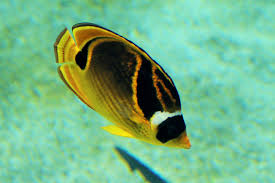
The imperial palaces of China, particularly the Forbidden City, were not only centers of political power and governance but also hubs of leisure and entertainment for the royal family. Within the grand walls of these palaces, emperors, empresses, consorts, and the imperial court engaged in various forms of recreation and pleasure, which were integral to their daily lives. These forms of entertainment not only allowed the royal family to escape the rigidity of court politics and their ceremonial duties but also reinforced their cultural and political authority. The leisure activities of the Chinese imperial family were rich in tradition and reflected the dynasties’ values, social structure, and connection to their ancestors and the divine.
In this article, we will explore the royal pleasures and entertainments within the palaces of China, focusing on the various forms of leisure enjoyed by the emperors and their courts, and their significance in reinforcing the authority and cultural values of the empire.
1. Music and Dance: The Sound of Royal Leisure
Music and dance were integral parts of royal entertainment in the Chinese imperial palaces. The emperors and empresses often indulged in grand musical performances, which were not only a source of pleasure but also a form of political and cultural expression. The court musicians, known for their skills in playing traditional Chinese instruments, would perform for the emperor and his court, creating an atmosphere of grandeur and cultural refinement.
The music played in the imperial palaces ranged from courtly ceremonial music to more relaxed and joyful melodies. The most common instruments used in these performances included the guqin (a seven-stringed zither), pipa (a pear-shaped lute), erhu (a two-stringed bowed instrument), and guzheng (a type of zither). These instruments, often accompanied by singing and dancing, were deeply rooted in Chinese culture and tradition, and their performances at the imperial court were a form of cultural display.
Dance was another important part of royal leisure, with the emperor and empresses often enjoying traditional Chinese dances that were performed by skilled dancers at royal banquets and gatherings. These dances were typically based on ancient rituals and were often accompanied by music to create a harmonious atmosphere. Some dances were performed in honor of the gods or ancestors, while others were more relaxed, symbolizing joy and celebration.
The combination of music and dance not only provided entertainment but also reinforced the emperor’s image as the patron of culture and the arts. In the imperial court, music and dance played a significant role in reinforcing the authority and legitimacy of the emperor as the Son of Heaven.
2. Calligraphy and Painting: The Artistic Pursuits of the Royal Family
The royal family of China, particularly the emperors and empresses, were great patrons of the arts. Calligraphy and painting were viewed not just as forms of recreation, but as expressions of scholarly refinement and cultural prestige. The emperors often engaged in these artistic pursuits as a means of intellectual stimulation and leisure, reflecting their roles as cultured leaders who valued traditional Chinese arts.
Calligraphy, the art of beautiful writing, was considered one of the highest forms of personal expression in Chinese culture. The emperors were often skilled calligraphers themselves, using their brushes to compose poems, aphorisms, and other literary works. Many of these written works were considered highly significant, as they showcased the emperor’s personal wisdom and were often used to reinforce his political messages.
Painting was another royal pastime, with the imperial court often commissioning large-scale paintings from renowned artists or creating their own masterpieces. These artworks, which could depict landscapes, animals, and scenes from Chinese mythology, were more than just decorative; they were symbolic representations of the emperor’s reign, prosperity, and connection to the natural and spiritual worlds. The imperial court also collected exquisite scrolls and paintings, which were displayed in palaces and gardens as symbols of wealth, power, and cultural taste.
The practice of calligraphy and painting in the imperial palaces was not only a form of entertainment but also an important means of cultural transmission. It reinforced the idea that the emperor, as the head of the state, was a learned and cultured ruler who upheld the traditions of Chinese civilization.
3. Imperial Gardens: A Haven of Tranquility and Reflection
The imperial gardens within the palaces, particularly in the Forbidden City, were designed to provide the royal family with a serene environment where they could enjoy moments of leisure, relaxation, and reflection. These gardens, with their carefully manicured landscapes, tranquil ponds, winding paths, and majestic pavilions, offered a peaceful retreat from the often hectic and ceremonial life of the imperial court.
The emperors and their families often spent time in these gardens, either alone or accompanied by members of the court, to meditate, contemplate, or simply enjoy the beauty of nature. The gardens were a place to indulge in quiet reflection and personal enjoyment, far removed from the formalities of court politics and state affairs. The beauty of the gardens was also symbolic of the emperor’s power and the prosperity of the empire, as the emperor was often seen as the steward of nature and the guardian of harmony between man and the environment.
Many of the imperial gardens featured specific design elements meant to symbolize concepts of balance, harmony, and immortality. For example, the layout of the gardens was influenced by the principles of feng shui, with the careful placement of rocks, water features, and trees to create a harmonious and auspicious environment. These gardens were more than just places of recreation; they were also spiritual and philosophical spaces, reflecting the emperor’s connection to nature, the cosmos, and the divine.
4. Imperial Feasts and Banquets: Lavish Royal Dining
Feasting was a central aspect of royal entertainment in the Chinese imperial palaces, with elaborate banquets and meals often being held in celebration of important occasions, festivals, or the emperor’s personal achievements. The emperor would host lavish feasts for his court, which included members of the imperial family, high-ranking officials, and other dignitaries. These feasts were not only a display of wealth and luxury but also an opportunity to reinforce the emperor’s status as a benevolent and generous ruler.
The royal chefs, often highly skilled and trained in the preparation of traditional Chinese delicacies, would prepare a wide variety of dishes for the banquet. The meals featured a diverse array of meats, vegetables, fruits, and delicacies, often presented in intricate and artistic ways. In addition to the food, fine wines and teas were served, and entertainment in the form of music, poetry recitations, and traditional performances would accompany the feasts.
Feasts were an important opportunity for the emperor to display his cultural sophistication and his role as the head of state who could provide for the prosperity and well-being of his court and the empire. The lavishness of the banquets reinforced the emperor’s divine mandate and his ability to maintain order and abundance within the empire.
5. Imperial Hunting: The Sport of Royal Prestige
Hunting was another leisure activity that was closely associated with the royal family. Emperors often participated in hunting expeditions as a way to demonstrate their physical prowess, leadership, and control over the natural world. These hunting trips were also seen as a way to maintain the strength and vitality of the emperor, who was expected to be a symbol of the empire’s health and power.
The royal hunting grounds were carefully managed, and the emperor would often hunt in forests or other natural areas near the palace. The hunt was not only a physical activity but also an opportunity for the emperor to reinforce his dominance over nature and symbolize his connection to the earth and the divine. The emperor’s participation in hunting expeditions also allowed him to display his martial abilities and to solidify his reputation as a strong and capable leader.
Hunting was also a social activity, with high-ranking officials and members of the imperial family joining the emperor on these expeditions. It was a time for camaraderie, bonding, and the reaffirmation of political alliances within the royal court.
6. The Theater and Performances: Royal Entertainment
The imperial courts were also a venue for theatrical performances, including traditional Chinese opera and other dramatic arts. These performances, often staged in the Forbidden City or other royal palaces, were an important form of entertainment for the emperor and his court. Traditional Chinese opera, such as Peking Opera, was performed in elaborate costumes and featured music, singing, and dancing.
The theater performances in the royal court were a means of storytelling and cultural transmission, recounting historical events, mythological tales, and Confucian moral lessons. These performances not only provided entertainment but also reinforced the values of the imperial court and the emperor’s role as the moral leader of the empire.
Conclusion: The Leisure Activities of the Imperial Court
The leisure activities of the Chinese imperial family in the royal palaces were far from mere indulgence. They served as a means of reinforcing the emperor’s authority, promoting cultural values, and maintaining the social structure of the empire. Whether it was through music and dance, artistic pursuits like calligraphy and painting, tranquil moments in the imperial gardens, or lavish banquets and feasts, these royal pleasures reflected the grandeur and sophistication of the imperial court.
Ultimately, the royal entertainments within the palaces were not only designed to provide pleasure and relaxation but also to maintain the emperor’s connection to the divine, nature, and the people he ruled. They were symbolic of the emperor’s central role in Chinese society and the grandeur of the imperial system.










